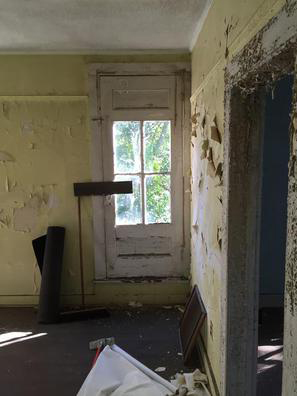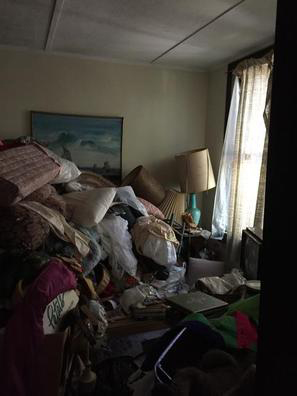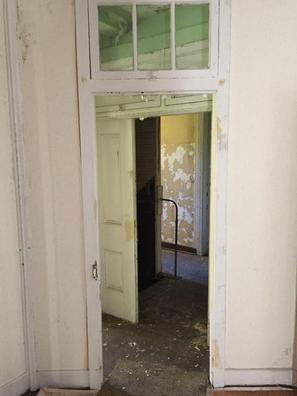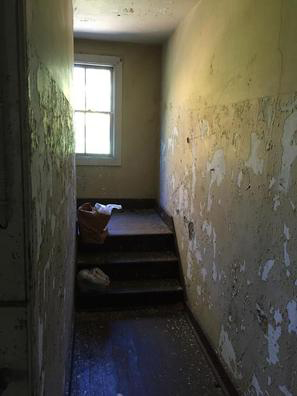Time Travel
Random images taken to record spaces – Incidentally finding life
Duo Dickinson
Photographers: Sean Rowe, Will Bogardus
All photos intended to document existing conditions for the creation of digital documents – to be used to save two buildings from demolition in Golden’s Bridge, New York in September of 2016. These are snapshots, not studies. They are uncomposed but capture the composition of time.
I design for people, mostly homes. A woman and I have walked through perhaps 100 places together over 25 years to make places to live. Dumps, sweet relics, empty lots, churches, garages, tenements. In the nicest towns, sketchy neighborhoods and in the middle of nowhere. But this was different. Two places in a nice town, owned by the same family. What made them different was we had a window into their unique circumstance, and that perspective turned my eyes back to the previous day’s meetings, and the thousands that preceded it over the last 38 years. These two homes were from the 19th century, hard by the 1990’s MetroNorth Train station. But unlike others my friend and I have seen we so often they were built as apartments. Unlike so many others they were largely unrenovated/remodeled. Ever. A few apartments had had tenants in the 1980’s but they were largely time capsules. Museums by neglect. Bought by a family that collected places, and then seemingly warehoused them – unoccupied. Our tour was lead by the son of the woman that bought these places 40 or more years ago – my entire 38 years of traveling to see places and people I had listed prior to this.
Small interventions over the last century were there – cut-in ducts, a bit of plastic pipe replacing lead, some dramatic cracking where wetness had made rot that allowed gravity to win against structure.
But these places were stark sentinels of the attempts humans make to create a place. To see time have its way with these noble, well built places was not tragic – they were still noble. But there had been no life in their harbor for 50, 60 years – it was the embodiment of another world left alone in its skin – mustily present in a frozen, slowly degrading state.
You might find tragedy in the sad, slow loss of vitality, usefulness, even potential structural viability – but these places were, and are, well-built – and not defiled by subsequent thoughtless wood butchery. Their elegance remained amid cracks, fallen plaster and some rot.
The failure to use them in any productive way, the fact that they have lain fallow for 2 generations out of the 6 or 7 in their existing held a mirror up to the motivations of my life. I live to build things, mostly homes. Part of me knows that an Ice Age will scrape everything away in a few dozen thousand years if fire, profit motive or the Zombie Apocalypse doesn’t come first. Everything I have spent a life working on could very well be rendered a memory. I also know I will die. But the proud, engaged energy that created those buildings and then left them, frozen in abandonment, held a very clear mirror up to the net-net of much of the life of buildings.
We create these things for families, for institutions for beliefs, but we create them out of ourselves: humans – mortal, flawed, but hoping, knowing its worth the effort. But that effort was frozen in these two buildings – living dead in real time – not unearthed archeology of a dead human endeavor, but the living dead of unused, but perfectly untouched, existence. The folk that built these places cared to do more than the minimum. The owners paid for craft and material and structure that could last for 60 or 70 years without love our attention. The hands that laid the stone, milled the wood, joined the lumber, set the lath then lovingly applied all the finishes were alive in these silent husks. Oh, all those folk are long dead. Except in these silent places.
The results of these devotional acts of building are not simple, let alone obvious. The results of what I do are not obvious beyond the buildings that result. The results, and the reasons for building beyond the necessary – beyond the cave, the ant hill or hive, to build what is human into a construction is so poignant in these starkly ignored beauties that I came to a thought I was surprised to think, given the 38 year trip: visiting is necessary, but connection is the reason for this mission.
Work is necessary – applying skill and effort to make things better is the essence of humanity, but it is the connection to that essence that made these long frozen buildings completely alive in their dead state.
I get it.





